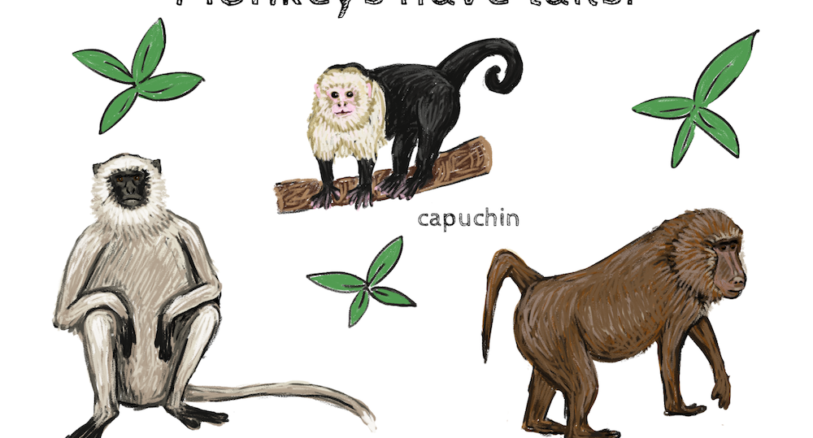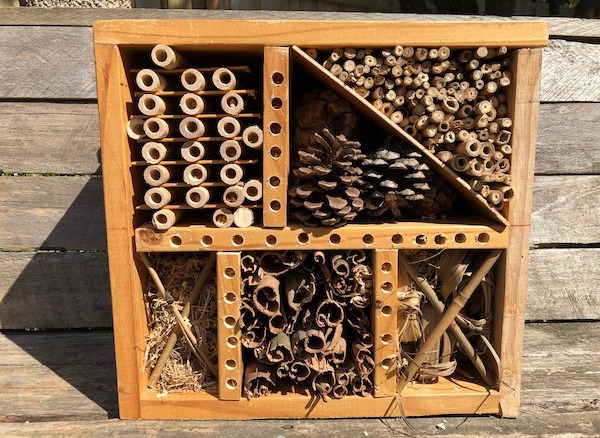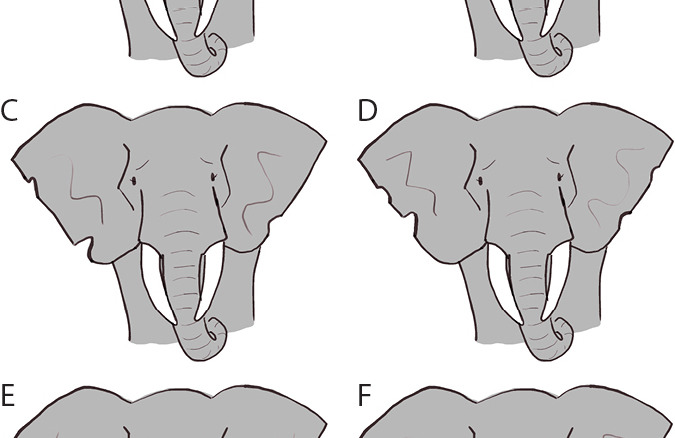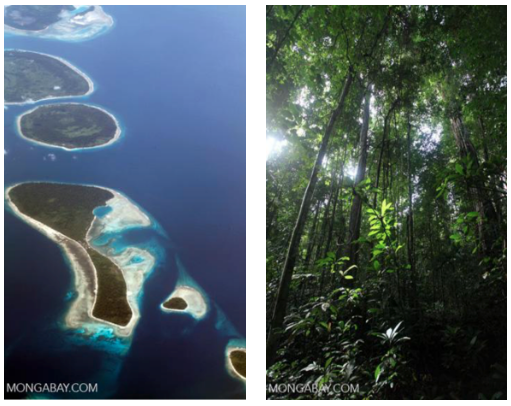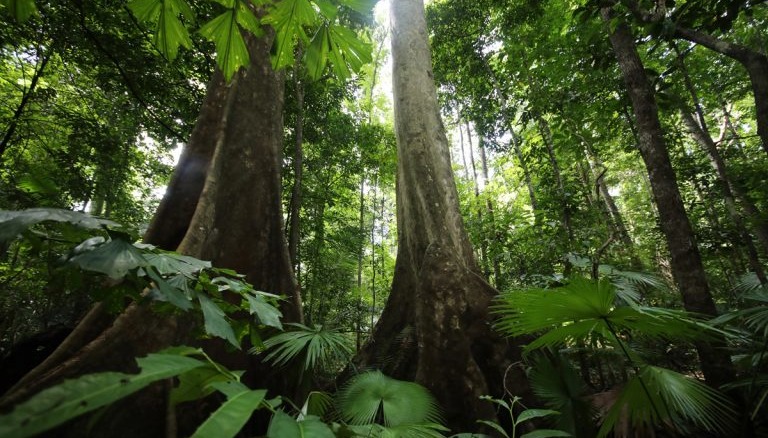
What is a wetland?
A wetland is an area of land that is covered with water (all year round, or for part of the year). The soil in wetlands can become waterlogged: this means that the soil is full of water, like a sponge.
There are freshwater wetlands. And there are wetlands where saltwater from the ocean mixes with freshwater from a river or stream.
There are many words used to describe different types of wetlands: swamp, marsh, fen, billabong, mangrove, floodplain and peatland. Can you think of any other types of wetlands?
Where are wetlands found?
Wetlands are found on all continents except Antarctica. They are found inland. They are also found in coastal areas.
Here are some examples of wetlands around the world:
All images: Rhett A. Butler
What kinds of organisms live in a wetland?
Wetlands are home to many types of plants, animals, fungi, and algae.
Cattails, rushes, sedges, and water lilies are some types of wetland plants. Some plants that live in wetlands are called hydrophytes. Hydrophytes – like the lotus plant – are adapted to living in water. Another famous wetland plant is the carnivorous Venus flytrap.
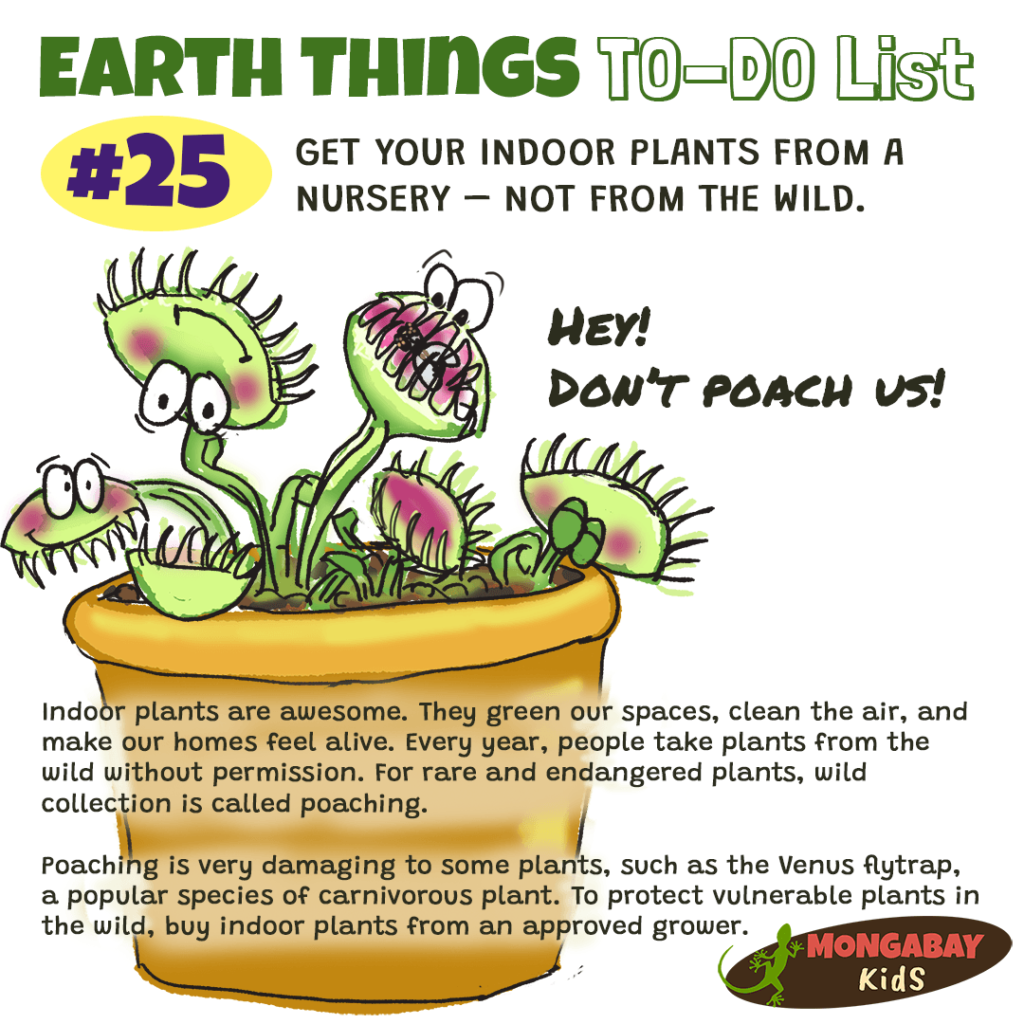
Wetlands are important homes for many animals. Dragonflies, fish, herons, frogs, turtles, and mollusks are some types of wetland animals. Mammals – like beavers and otters – also live in wetlands.
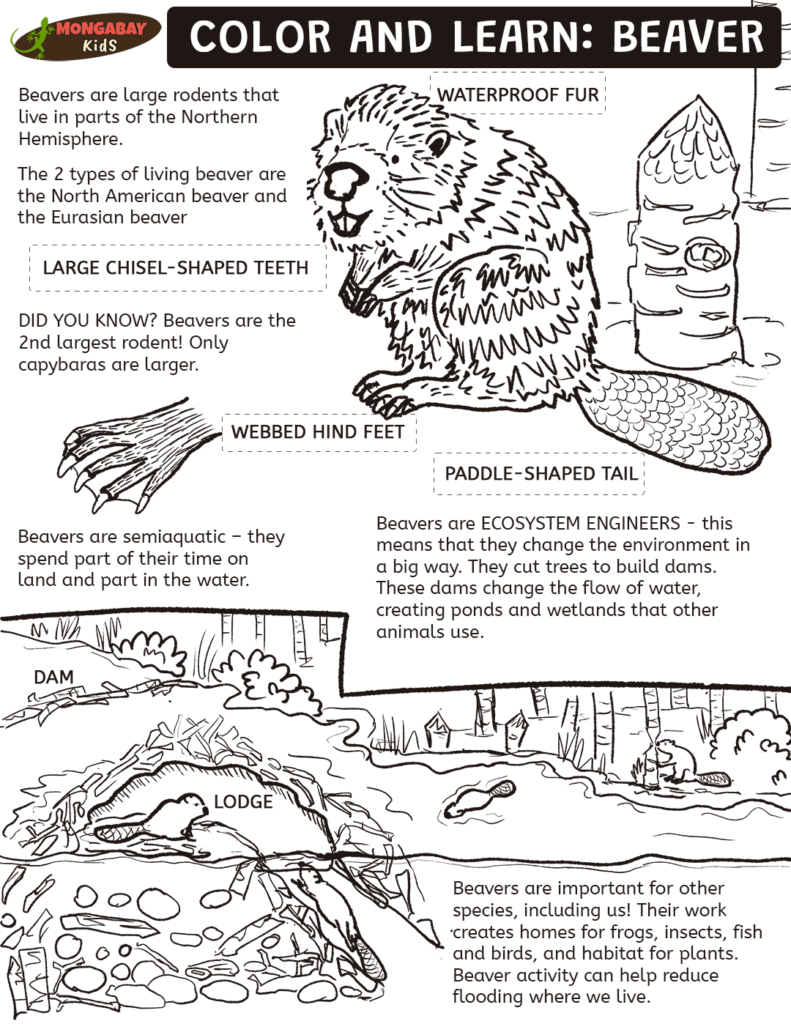
Why are wetlands wonderful?
Here are some of the reasons why wetlands are important. They:
- Store carbon
- Clean and filter water
- Provide food to many animals, including us
- Help protect land from erosion and floods
- Make us feel happy

How can we protect and restore our wetlands?
Our wonderful wetlands need help to thrive. Here are a few actions you can take:
- Learn more about wetlands. (Check out more resources in the links below.)
- Visit wetlands to appreciate their beauty! Tread lightly when you visit: stay on paths and boardwalks. Be mindful not to step on small or delicate plants.
- Dispose of waste carefully. Litter is bad for wetland life.
- Garden organically: avoid using pesticides and insecticides in home gardens.
- Get involved! Participate in a wetland cleanup. Or help a wetland restoration project in your local area.
Related activity (Grades 3-5)
Wetland activity: imagine life as an animal in the Okavango Delta
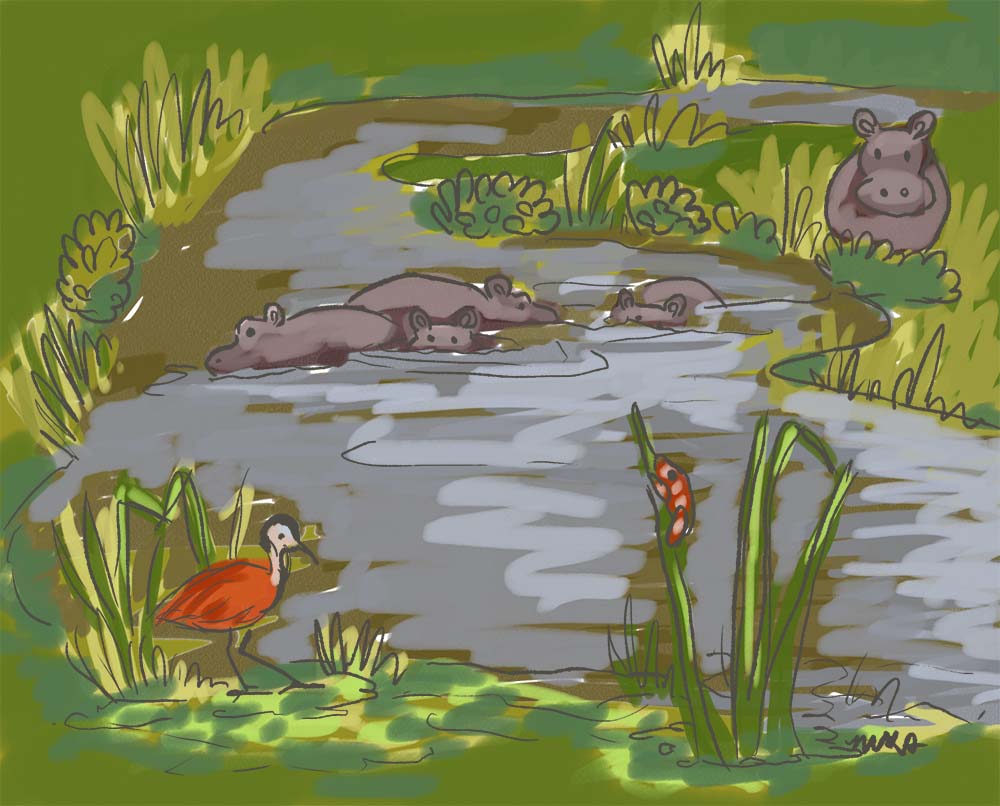
Resources for educators and caregivers
February 2 is World Wetlands Day.
Additional resources:
World Wetlands Day website: worldwetlandsday.org
EPA:
NOAA: What is a wetland?
dcceew.gov.au: About wetlands
WWF: What is a wetland? And 8 other wetland facts
Mongabay India: Wetlands explainer
*Mongabay Kids is not responsible for content published on external sites






